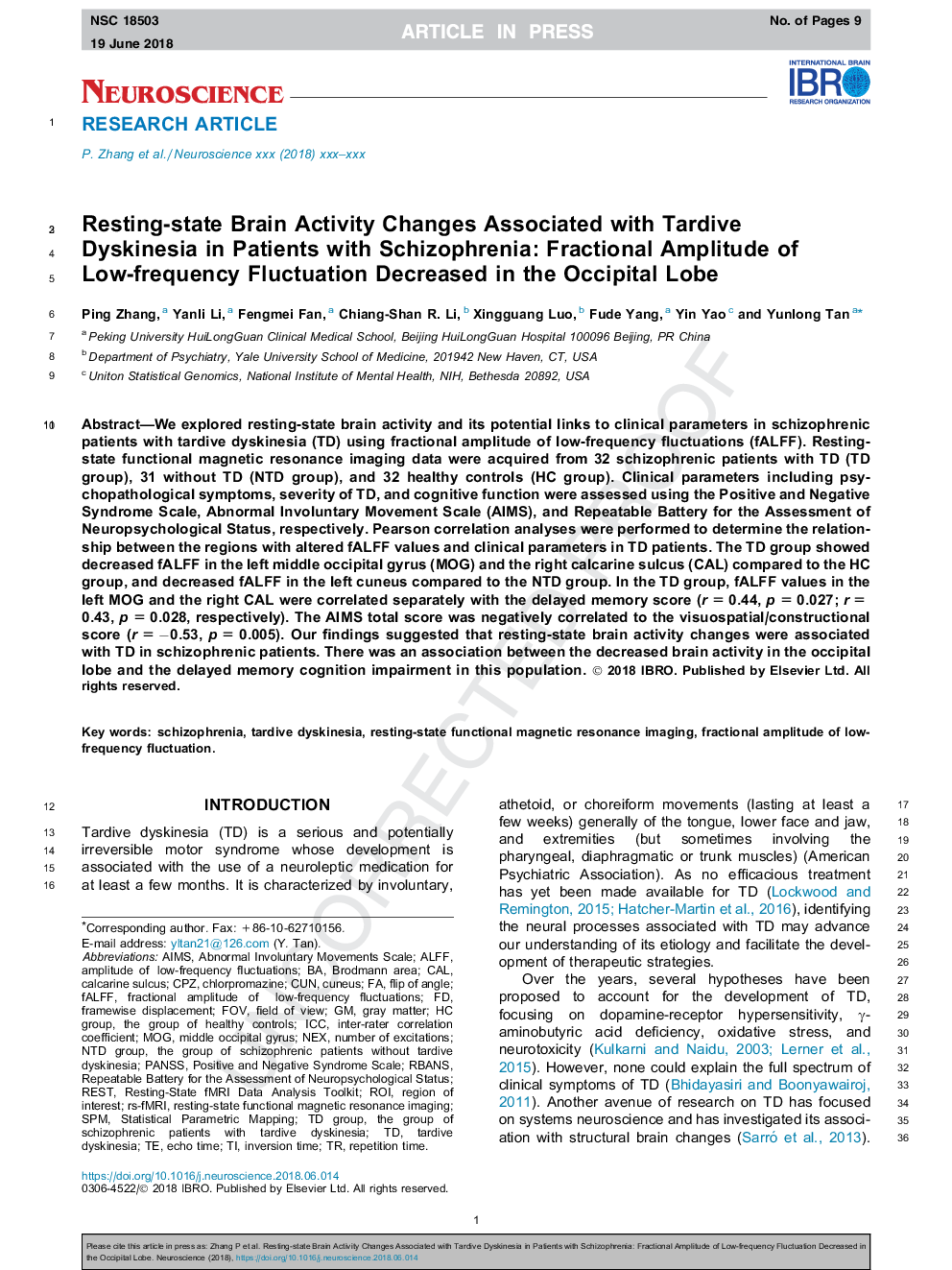| Article ID | Journal | Published Year | Pages | File Type |
|---|---|---|---|---|
| 8840598 | Neuroscience | 2018 | 9 Pages |
Abstract
We explored resting-state brain activity and its potential links to clinical parameters in schizophrenic patients with tardive dyskinesia (TD) using fractional amplitude of low-frequency fluctuations (fALFF). Resting-state functional magnetic resonance imaging data were acquired from 32 schizophrenic patients with TD (TD group), 31 without TD (NTD group), and 32 healthy controls (HC group). Clinical parameters including psychopathological symptoms, severity of TD, and cognitive function were assessed using the Positive and Negative Syndrome Scale, Abnormal Involuntary Movement Scale (AIMS), and Repeatable Battery for the Assessment of Neuropsychological Status, respectively. Pearson correlation analyses were performed to determine the relationship between the regions with altered fALFF values and clinical parameters in TD patients. The TD group showed decreased fALFF in the left middle occipital gyrus (MOG) and the right calcarine sulcus (CAL) compared to the HC group, and decreased fALFF in the left cuneus compared to the NTD group. In the TD group, fALFF values in the left MOG and the right CAL were correlated separately with the delayed memory score (râ¯=â¯0.44, pâ¯=â¯0.027; râ¯=â¯0.43, pâ¯=â¯0.028, respectively). The AIMS total score was negatively correlated to the visuospatial/constructional score (râ¯=â¯â0.53, pâ¯=â¯0.005). Our findings suggested that resting-state brain activity changes were associated with TD in schizophrenic patients. There was an association between the decreased brain activity in the occipital lobe and the delayed memory cognition impairment in this population.
Keywords
MOGROIICCSPMRBANSNEXrs-fMRIALFFPANSSCPZFOVAIMSCunRepeatable Battery for the Assessment of Neuropsychological StatusReSTResting-state functional magnetic resonance imagingnumber of excitationsframewise displacementmiddle occipital gyrusFractional amplitude of low-frequency fluctuationsamplitude of low-frequency fluctuationsfALFFGray matterabnormal involuntary movements scalepositive and negative syndrome scaleBrodmann arearegion of interestField of viewStatistical Parametric Mappingcalchlorpromazinecalcarine sulcuscuneus
Related Topics
Life Sciences
Neuroscience
Neuroscience (General)
Authors
Ping Zhang, Yanli Li, Fengmei Fan, Chiang-Shan R. Li, Xingguang Luo, Fude Yang, Yin Yao, Yunlong Tan,
